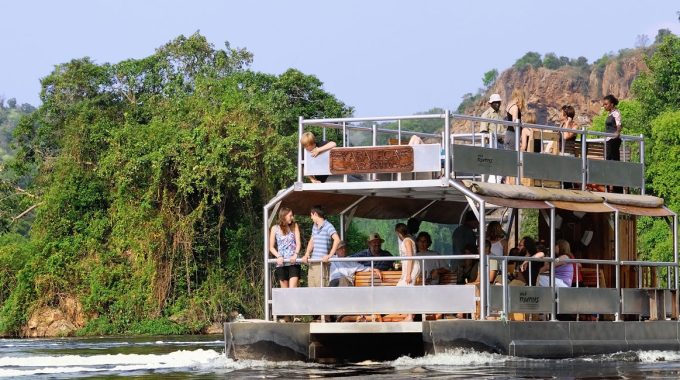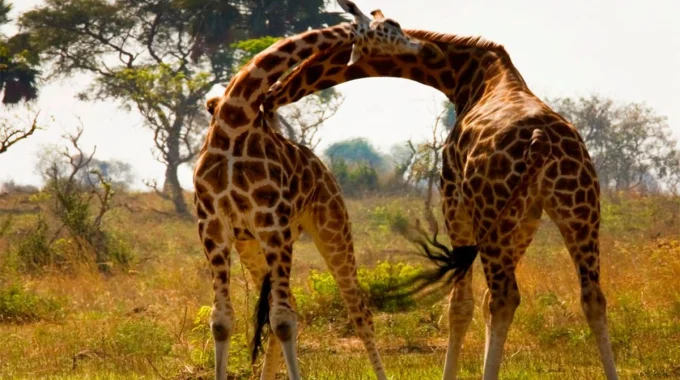Is Murchison Falls worth a visit? Absolutely, Murchison Falls National Park in Uganda is a…
Is it safe to travel to Murchison Falls National Park?
Is it safe to travel to Murchison Falls National Park? Murchison Falls National Park in Uganda is one of the country’s most popular wildlife destinations, and while it is generally considered safe for tourists, there are several factors to keep in mind to ensure a smooth and secure visit. Here’s a detailed breakdown of the safety considerations when traveling to Murchison Falls:

Wildlife safety safari: Is it safe to travel to Murchison Falls National Park?
-
Security and Political Stability
- General Safety: Uganda, including Murchison Falls National Park, is relatively safe for tourists, with significant improvements in safety and infrastructure.
- Local Security Conditions: Always check for updates from reliable sources like the Uganda Tourism Board or your safari operator before traveling, as conditions may change. The park is generally peaceful, but staying informed about the local security climate is important.
-
Wildlife Safety
- Dangerous Animals: Murchison Falls is home to wildlife such as lions, elephants, buffaloes, hippos, and crocodiles. While these animals attract visitors, they can be dangerous. To stay safe, remember to:
- Follow your guide’s instructions.
- Stay in the vehicle during game drives unless told otherwise.
- Be cautious on boat tours near the river.
- Never get too close to wildlife.
- Always travel with a licensed safari guide who is familiar with the park and its wildlife.
-
Health and Medical Considerations
- Vaccinations: Before traveling to Uganda, consult a healthcare provider about necessary vaccinations, including the required yellow fever vaccine. Additional recommended vaccines are typhoid, hepatitis A and B, and tetanus.
- Malaria: Uganda is malaria-endemic, so it’s crucial to prevent mosquito bites. Use insect repellent, wear long sleeves, and sleep under a mosquito net. Your doctor might also suggest malaria prophylaxis during your stay.
- Health Facilities: There are basic healthcare facilities near the park, but they may be limited in terms of services and resources. For serious medical conditions or emergencies, it’s best to have travel insurance that includes emergency evacuation to a well-equipped hospital, which may be in Kampala or abroad.
-
Transport and Road Conditions
- Park Access: Roads leading to Murchison Falls and within the park can be challenging, especially during the rainy season (March to May, October to November). The park is accessible by road from Kampala, but some roads within the park itself are rugged and can be muddy during the wet season.
- 4×4 Vehicles: A 4×4 vehicle is usually necessary to reach Murchison Falls and explore the park. It’s best to use a reputable safari operator familiar with local conditions.
- Flight Access: To save time and avoid road hazards, some visitors prefer flying to the park’s airstrip (Pakuba or Chobe) from Entebbe or Kampala, especially during the rainy season.
-
Safety on Boat Cruises
- River Safety: The Nile River in Murchison Falls is a key attraction, with boat cruises providing great wildlife views. However, caution is necessary. Hippos and crocodiles inhabit the waters, so it’s essential to follow your guide’s safety instructions about approaching the shore and wildlife. Always stay seated during the game-viewing portion, as animals can be unpredictable.
- me slippery and difficult to navigate. In contrast, the dry season (June to September and December to February) is ideal for visiting the park as the weather is more predictable and the roads are in better condition.
- What to Bring: Be prepared for both hot and rainy weather, with appropriate clothing, sunscreen, and rain gear. If visiting during the rainy season, plan for potential delays due to muddy roads and weather-related challenges.
-
Tourism Infrastructure and Safety
- Accommodation: Murchison Falls offers a range of accommodation options, from budget lodges to luxury safari camps, all prioritizing safety with 24-hour staff and secure premises. Choose reputable places and check reviews to ensure they meet your safety and comfort needs.
- Mobile Network and Communication: Mobile phone coverage exists in parts of the park but can be patchy in remote areas. Ensure your safari operator has an emergency communication plan. Consider having a satellite phone or local SIM card for better connectivity.
-
Tour Operators and Guides
- Experienced Safari Operators: The safety of your trip relies on your tour operator’s quality. Choose an experienced, licensed safari operator who prioritizes safety and conservation. They should provide well-maintained vehicles and knowledgeable guides, ensuring compliance with local regulations to minimize risks.
- When in the park, opt for guided tours led by trained rangers or safari guides familiar with the local wildlife and terrain.
-
Travel Insurance
- Emergency Evacuation: Having travel insurance that covers medical emergencies, evacuation, and trip interruptions is essential. It should cover evacuation to the nearest medical facility, whether in Kampala or another country.
- Additionally, check that your policy protects against trip changes or cancellations, especially for activities like safari tours and boat cruises.
Conclusion
Murchison Falls National Park is a generally safe and rewarding destination. To ensure a safe trip, stay informed, choose a reputable safari operator, follow wildlife safety guidelines, and take health precautions. Always check travel advisories and prepare for the park’s climate and road conditions for an enjoyable experience.



